
Do you have a question about the Husqvarna 575XP AutoTune EPA I and is the answer not in the manual?
| Engine displacement | 73.5 cm³ |
|---|---|
| Power output | 4.2 kW |
| Chain pitch | 3/8" |
| Chain gauge | 0.058" |
| Bar length range | 16-28 in |
| Sound pressure level | 106 dB(A) |
| Oil tank volume | 0.42 L |
| Recommended bar length | 50-70 cm / 20-28 in |
| Weight (without cutting equipment) | 6.6 kg |
Illustrations and explanations of symbols displayed on the chain saw itself for user guidance and safety.
Illustrations and explanations of symbols used within the operator's manual to convey instructions and warnings.
Details the operating hours for which the engine meets federal emissions requirements.
A welcoming message from Husqvarna congratulating the customer on their purchase.
Identification and labeling of the various parts and components of the chain saw.
Essential checks and preparations required before operating the chain saw for the first time.
Key safety guidelines and considerations for operating the chain saw safely.
Emphasizes the need for caution and good judgment in all operating situations.
Details the mandatory protective gear required for safe chain saw operation.
Explanation of the chain saw's built-in safety features and their importance.
Information on the chain brake system and the function of the front hand guard.
Description of the throttle lockout mechanism and its function in preventing accidental acceleration.
Explanation of the chain catcher's role in preventing injury if the chain breaks or jumps off.
Details the function of the right hand guard for protection and grip.
Information about the system designed to reduce operator fatigue by minimizing vibration.
Instructions on how to use the stop switch to turn off the engine.
Information on the muffler's function, heat, and safety precautions related to its use.
Guidance on selecting and maintaining cutting equipment for optimal performance and safety.
Focuses on specific cutting equipment features that help minimize the risk of kickback.
Defines key terms and specifications related to the saw's bar and chain.
Detailed instructions on how to sharpen cutting teeth and adjust the depth gauge for optimal cutting.
Further guidance on adjusting the depth gauge for proper chain performance.
Step-by-step instructions for properly tensioning the saw chain.
Essential information on using chain oil and ensuring proper lubrication of the bar and chain.
Methods for checking if the chain lubrication system is functioning correctly.
Information on the different types of drive sprockets and their maintenance.
Guidance on regularly lubricating the needle bearing in the clutch drum.
Guidelines for inspecting the chain, bar, and sprocket for wear and damage.
Detailed steps for correctly installing the guide bar and saw chain onto the chainsaw.
Recommendations for using the correct type and quality of gasoline for the engine.
Information on the proper type of two-stroke oil and mixing ratios for the fuel mixture.
Critical safety precautions to follow when handling fuel and refueling the machine.
Guidelines for safely transporting and storing the chain saw and fuel.
Procedure for starting the chainsaw when the engine is cold.
Procedure for starting the chainsaw when the engine is warm.
Instructions on how to safely stop the chainsaw engine.
Mandatory pre-operation checks to ensure the chain saw is safe and functional.
Fundamental safety rules and best practices for operating the chain saw effectively.
Detailed explanation of kickback causes and methods to prevent it.
Fundamental techniques for safe and efficient cutting with the chain saw.
Definitions of common terms used in chain saw operations like cutting and limbing.
Techniques for safely removing branches from a felled tree.
Methods for cutting logs safely, considering different support conditions and risks.
Comprehensive guide to safely felling trees, including planning and safety zones.
Detailed explanation of the three cuts required for controlled tree felling.
Procedures for safely freeing a tree that has become trapped during felling.
Techniques for safely cutting wood under tension to avoid dangerous springback.
Specific methods and techniques to prevent kickback incidents.
A detailed explanation of what kickback is and how it occurs.
Information on carburetor adjustment, including the AutoTune function.
Procedures for inspecting and maintaining the chain brake, front hand guard, and other safety features.
Method for testing the automatic activation of the chain brake.
Procedure for checking the proper functioning of the brake trigger.
Checking the throttle control and lockout for free movement and proper spring function.
Ensuring the chain catcher and right hand guard are undamaged and securely attached.
Regularly checking the vibration damping units for damage or deformation.
Checking the muffler's attachment, condition, and cleaning the spark arrestor screen.
Instructions for changing a broken starter cord or recoil spring.
Guidance on how to tension the recoil spring correctly.
Procedures for cleaning and replacing the air filter to prevent engine problems.
Information on checking, cleaning, and replacing the spark plug for optimal engine performance.
Instructions for lubricating the bar tip sprocket with grease.
Guidance on regularly lubricating the needle bearing in the clutch drum.
How to adjust the oil pump to control the flow of chain oil.
Instructions for cleaning the cooling system to prevent overheating.
Explanation of the air injection system and its maintenance requirements.
Measures to take for operating the machine in cold and snowy conditions.
Instructions for installing the winterising kit for cold weather operation.
Lists recommended bars, chains, and drive link counts for Canada.
Illustrates tools and provides specifications for filing saw chains and using file gauges.
Details owner's rights, obligations, claims, coverage, exclusions, and service locations.
Lists warranted parts and outlines owner's maintenance responsibilities for emission control systems.
General safety guidelines and best practices for chain saw operators.
Critical safety measures specifically aimed at preventing kickback injuries.
Further safety advice covering operation, handling, fatigue, and maintenance.
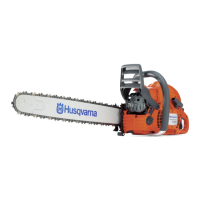
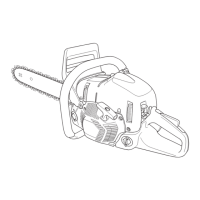
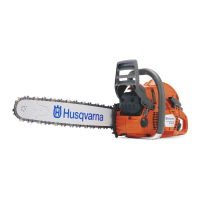
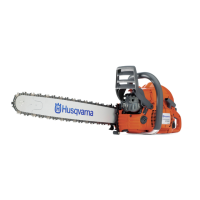
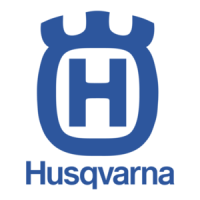

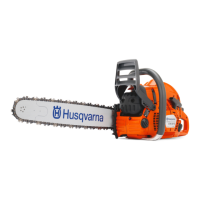
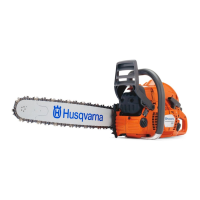


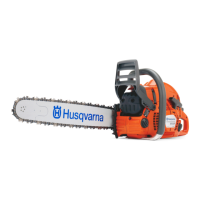

